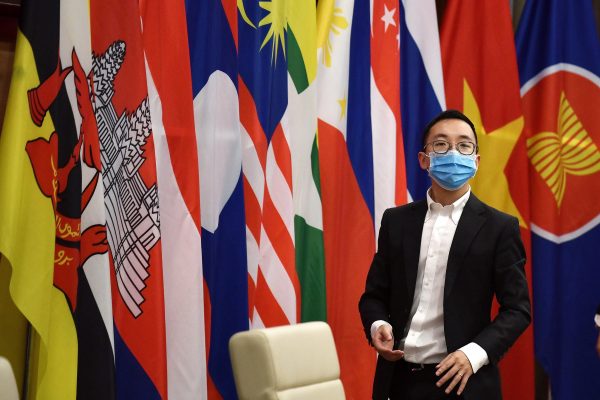Southeast Asian states acted without consulting with their neighbours or ASEAN, leading to disparate policies. Given the contagiousness of COVID-19, states needed to communicate information regarding infections and the subsequent policy measures they were taking to combat them to allow neighbouring states to prepare an adjoining response. The timeliness of these responses was key to stopping the virus.
In March 2020, there were 841 infections and 11 deaths in the region. The Philippines became the first ASEAN state to go into lockdown. In April 2020, when Cambodia went into lockdown, infections had risen to 16,919 and fatalities to 593. On 16 March 2020, Malaysia closed its borders without warning, which led to a rapid movement of Singaporean migrant workers from Singapore to Malaysia so that they could continue to work. Migrant workers in the region were left without access to healthcare, savings, food security or employment, and were at the whims of local police.
Unclear and impromptu measures created hysteria among workers who migrated to different countries for employment. Without proper accommodation, migrants had to reside in cramped spaces that were ripe for the spread of COVID-19. This was evident in Singapore, where migrant dormitories had infection rates three times higher than the non-migrant population.
While ASEAN conducted several meetings and summits, it failed to deliver tangible results until infections were already soaring. An ASEAN Summit and ASEAN+3 Summit on COVID-19 were held in April 2020, more than a month after the declaration of the pandemic by the World Health Organisation. These meetings failed to replicate successful measures deployed in previous epidemics, like creating a task force for COVID-19.
An individual state’s response to COVID-19 is determined by its capacity to treat infections, rapidly test and trace, and provide necessary medical personnel and equipment. States like Singapore that have robust healthcare systems and economic security contained the virus at its nascent stage, while states that struggled to forge a coherent strategy, like Indonesia, received no material assistance from ASEAN. Crucially, ASEAN lacked a proper mechanism to deliver relief packages to states that had depleted economic resources and health infrastructure.
Vaccination also brings its own set of challenges. No regional vaccination drive exists to bridge the gap between ASEAN states in terms of the acquisition and production of vaccines. Cambodians that migrate to Thailand for employment are not considered in the vaccination statistics of either Thailand or Cambodia. Migrant workers are mostly involved in the informal sectors of the economy and have neither a formal nor a legal status in their host country. The emphasis on vaccinating migrants must come from a body at the regional level to subdue such policy discrepancies.
ASEAN failed when it came to COVID-19 to recreate the successes it achieved against avian influenza and SARS. It did not create a task force soon enough, as it did successfully with the Highly Pathogenic Avian Influenza Task Force. That task force provided a framework for cooperation and delegated specific duties to member states. While Singapore focused on regional epidemiologic studies, Thailand monitored rising infections and Malaysia built disease-free zones and developed containment measures.
These specialised responsibilities preserved human and economic resources that were already stretched thin. The task force regularly held discussions on policy initiatives with researchers, officials and scientists to prepare a coordinated response to cross-border management and vaccine procurement.
The same cannot be said this time around. The ASEAN COVID-19 Response Fund was created to supply medical and non-medical supplies. But this fund doesn’t have comprehensive guidelines, which means states are unable to draw from it promptly when making policy decisions.
The newly launched ASEAN Centre for Public Health Emergencies and Emerging Diseases seems to be a step in the right direction, but it is still in its early stages. The 2017 ASEAN Joint Disaster Response Plan created a common framework of responses for different disasters. A similar pandemic response plan could provide guidance for early prevention mechanisms and protocols for establishing a task force that delegates responsibilities to member states when disasters hit.
The divided responses of ASEAN states have delayed Southeast Asia’s aspirations to quickly recover from the pandemic. Many states have turned to regional powers like the United States or China for medical and economic assistance. ASEAN’s failure to act when confronted with a regional health security problem risks undermining its influence in the Asia Pacific over the long term.
Shubhankar Kashyap is a final year student of political science at Ramjas College, University of Delhi.
Anushka Bhattacharya is a final year student of political science at Miranda House, University of Delhi.

